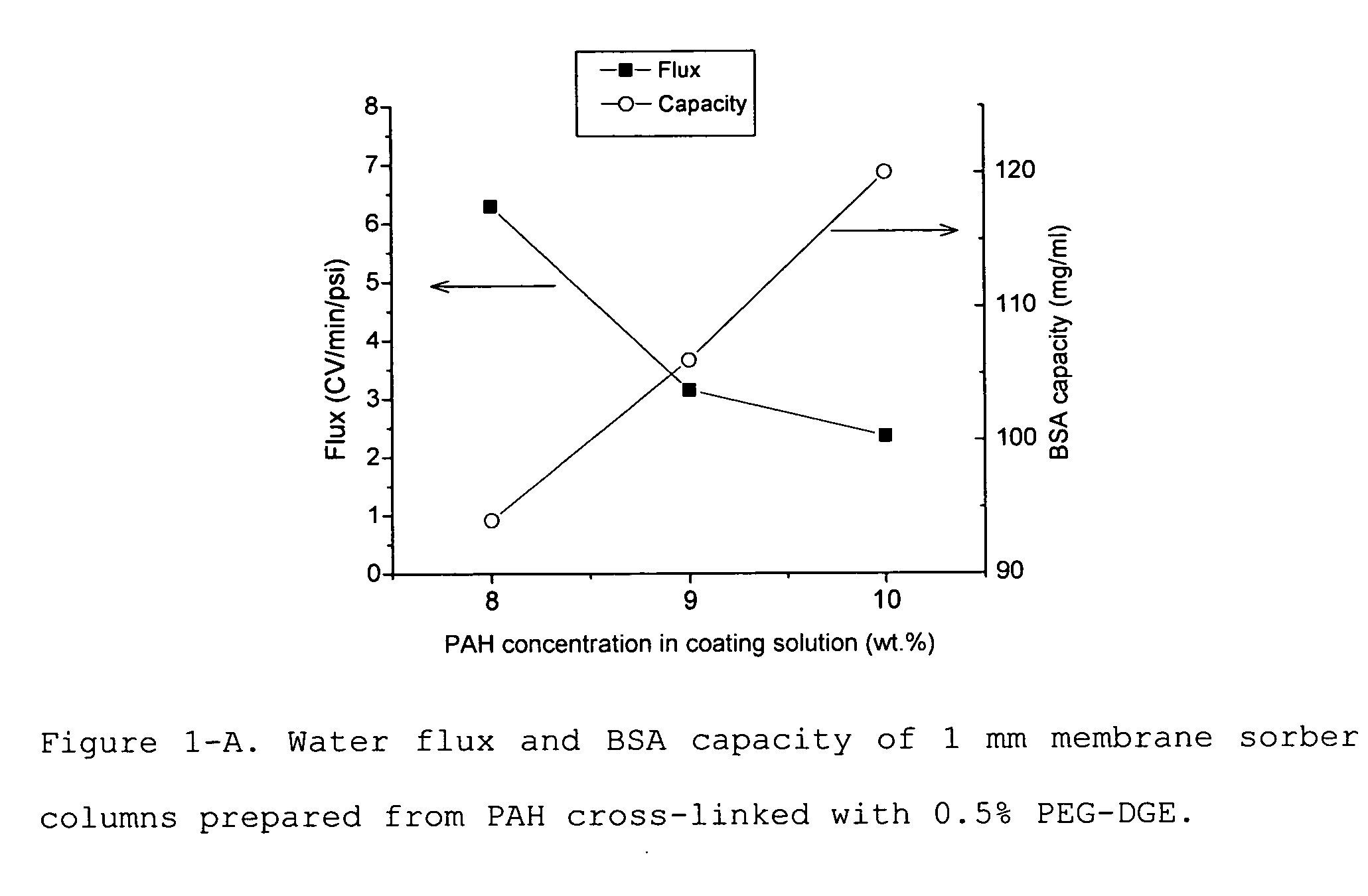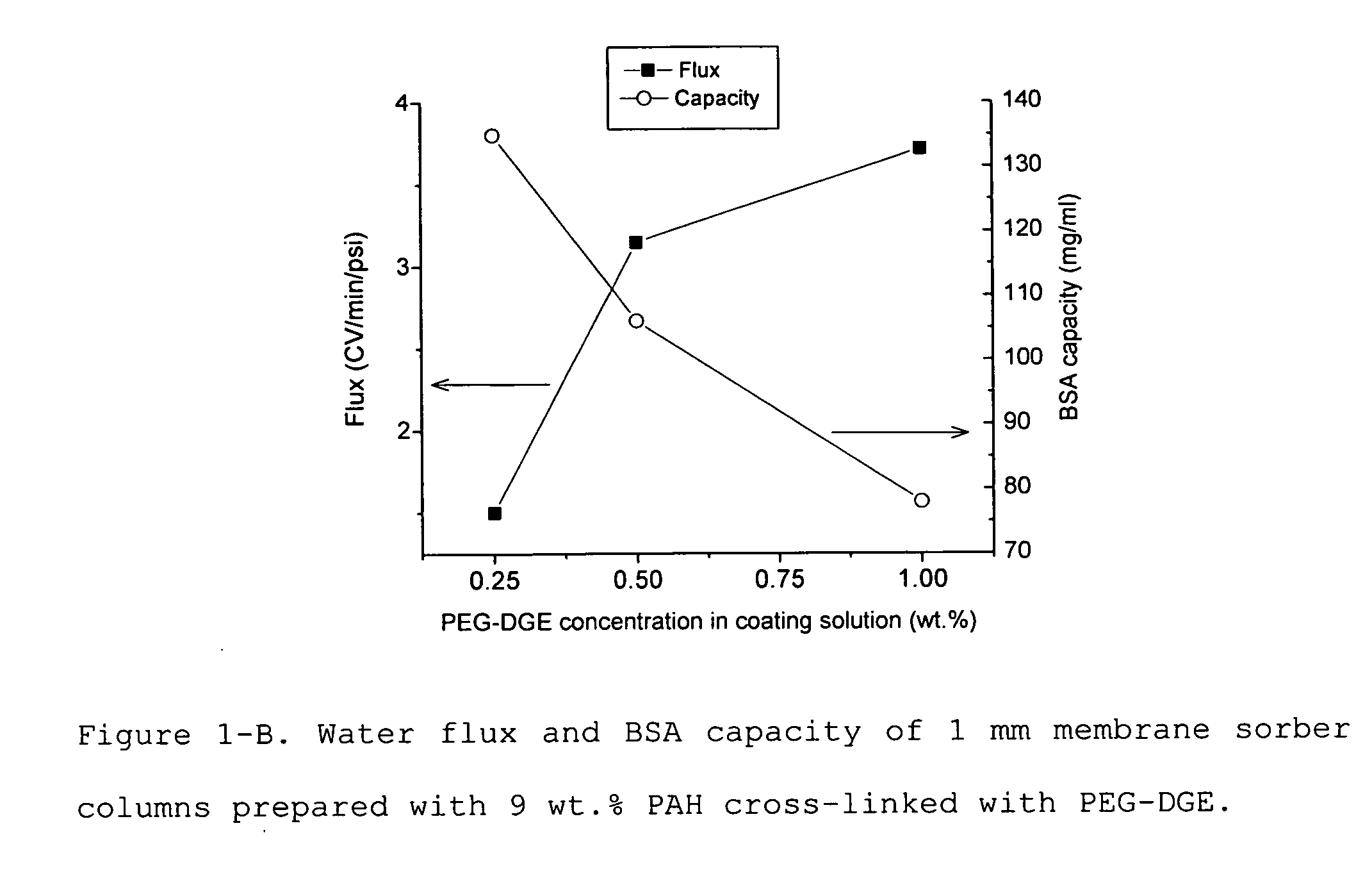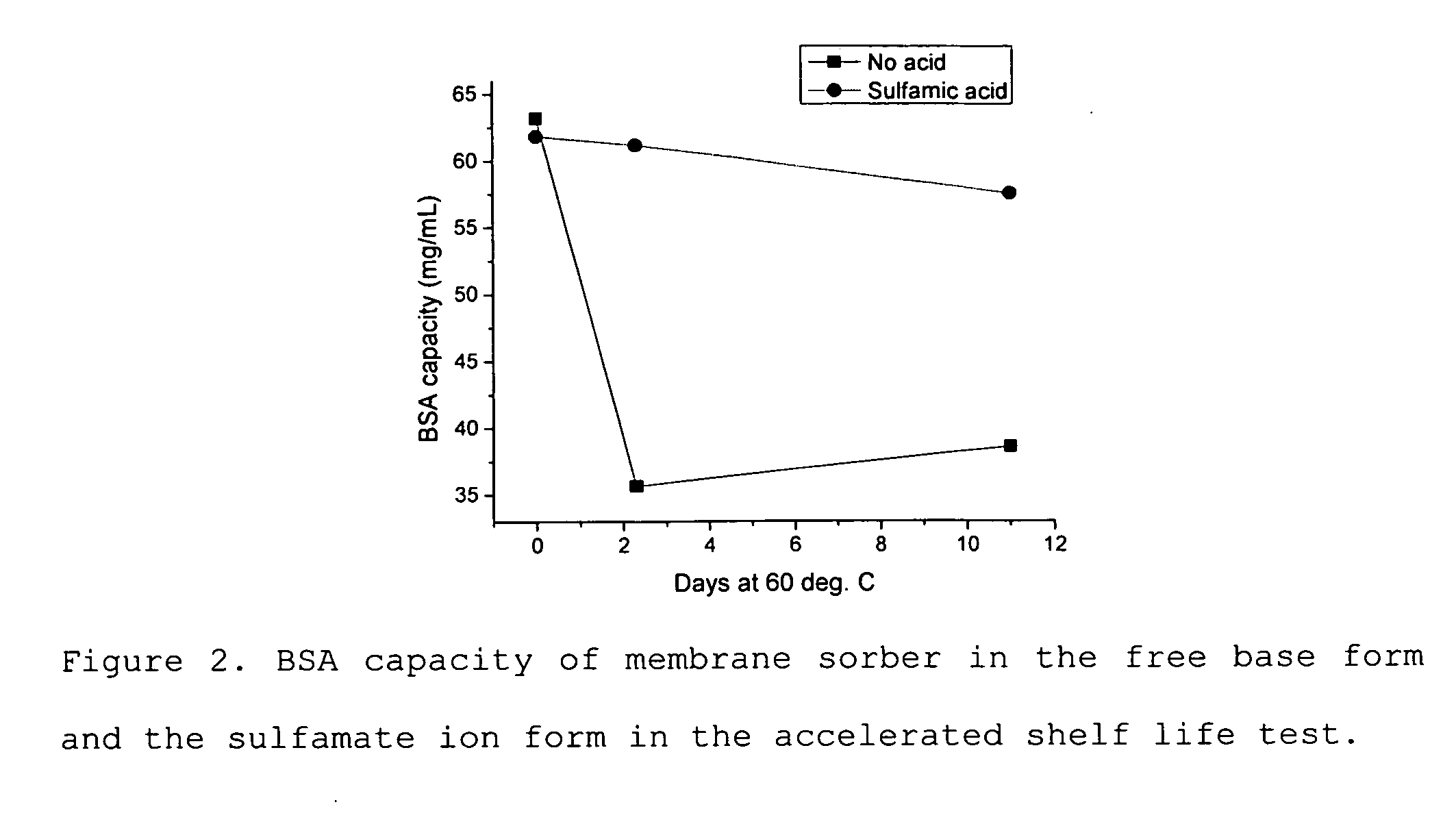Media for membrane ion exchange chromatography based on polymeric primary amines, sorption device containing that media, and chromatography scheme and purification method using the same
a technology of anion exchange chromatography and primary amine, which is applied in the direction of anion exchangers, amphoteric ion exchangers, chemical/physical processes, etc., can solve the problems of increased column pressure drop, large volume of bead-based systems, and inability to achieve high-efficiency chromatography, and achieve superior removal of host cell proteins, the effect of strong binding of protein impurities
- Summary
- Abstract
- Description
- Claims
- Application Information
AI Technical Summary
Benefits of technology
Problems solved by technology
Method used
Image
Examples
example 1
PAA on Hydrophobic UPE
[0063]An aqueous solution was prepared containing 20 wt. % isopropanol, 9 wt. % PAH (molecular weight 15,000), 3 wt. % lithium hydroxide monohydrate, 2 wt. % Triton X-100, 0.5 wt. % PEG-DGE (molecular weight 526), and 0.2 wt. % polyvinyl alcohol (molecular weight 30,000, degree of hydrolysis 98%). A hydrophobic UPE membrane with pore size rating 0.65 μm was fully wetted with this solution, and excess liquid was nipped off. The membrane was dried at room temperature for 24 hours and rinsed with copious amounts of water and methanol and dried again. The membrane wets readily with water and has weight add-on of about 25%. An eight-layer Millex®-type syringe device was manufactured from this membrane that has a surface area of 3.5 cm2 and column height 1 mm. The device has a flow rate of 4.3 CV / min / psi, BSA capacity 90 mg / ml, and strength of binding of 54 mS / cm.
example 2
PAA on Hydrophilic UPE
[0067]An aqueous solution was prepared containing 10 wt. % PAA (molecular weight 15,000) and 0.5 wt. % PEG-DGE (molecular weight 526). A hydrophilic UPE membrane with pore size rating 0.65 μm was fully wetted with this solution, and excess liquid was nipped off. The membrane was dried at room temperature for 24 hours, rinsed with copious amounts of water and dried again. The eight-layer device has a flow rate of 4.3 CV / min / psi, BSA capacity 80 mg / ml, and strength of binding of 49 mS / cm.
example 3
Polyvinyl Amine on Hydrophilic UPE
[0068]An aqueous solution was prepared containing 20 wt. % isopropanol, 7 wt. % polyvinyl amine (Lupamin 9095, BASF Corp., Mount Olive, N.J.) and 0.5 wt. % PEG-DGE (molecular weight 526). A hydrophilic UPE membrane with pore size rating 0.65 μm was fully wetted with this solution, and excess liquid was nipped off. The membrane was dried at room temperature for 24 hours and rinsed with copious amounts of water and methanol and dried again. An eight-layer device was manufactured from this membrane that has a surface area of 3.5 cm2. The device has a flow rate of 3.1 CV / min / psi, BSA capacity 87 mg / ml, and strength of binding of 32 mS / cm.
PUM
| Property | Measurement | Unit |
|---|---|---|
| temperature | aaaaa | aaaaa |
| temperature | aaaaa | aaaaa |
| heights | aaaaa | aaaaa |
Abstract
Description
Claims
Application Information
 Login to View More
Login to View More - R&D
- Intellectual Property
- Life Sciences
- Materials
- Tech Scout
- Unparalleled Data Quality
- Higher Quality Content
- 60% Fewer Hallucinations
Browse by: Latest US Patents, China's latest patents, Technical Efficacy Thesaurus, Application Domain, Technology Topic, Popular Technical Reports.
© 2025 PatSnap. All rights reserved.Legal|Privacy policy|Modern Slavery Act Transparency Statement|Sitemap|About US| Contact US: help@patsnap.com



